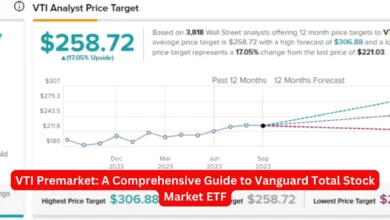US Economy Adds More Jobs Than Expected in May as Unemployment Rate Ticks Higher

The US labor market continues to defy expectations, demonstrating resilience amid economic uncertainties. Data from the Bureau of Labor Statistics released on Friday revealed that the labor market added 272,000 nonfarm payroll jobs in May, a significant increase compared to the 185,000 jobs forecasted by economists. This impressive job growth underscores the underlying strength of the US economy, even as other indicators show mixed signals.
Unemployment Rate and Wage Growth
Despite the surge in job additions, the unemployment rate in May rose to 4% from the previous month’s 3.9%. This slight increase suggests a complex labor market dynamic where more people are entering the workforce, possibly encouraged by the robust hiring environment.
Wages, a critical metric for gauging inflation pressures, showed a year-over-year increase of 4.1%, reversing a prior downward trend. On a monthly basis, wages grew by 0.4%, up from the 0.2% gain recorded in April. These wage increases indicate rising income levels for workers, which could have implications for consumer spending and overall economic growth.
Labor Force Participation Rate
The report highlighted a decrease in the labor force participation rate, which slipped to 62.5% from 62.7% in April. However, participation among prime-age workers (ages 25-54) climbed to 83.6%, the highest level in 22 years. This increase among prime-age workers suggests a healthy labor market for those in their most productive years, despite the overall participation rate decline.
Sector-Specific Job Growth
Several sectors exhibited notable job gains in May. The healthcare sector led the way, adding 68,000 jobs. This growth reflects the ongoing demand for healthcare services and the sector’s critical role in the economy.
Government employment also saw a substantial increase, with 43,000 jobs added. The leisure and hospitality sector followed closely, contributing 42,000 jobs. These gains are particularly significant as they indicate recovery in sectors that were severely impacted by the pandemic.
Impact on Financial Markets
The labor market’s robust performance has had immediate effects on financial markets. Prior to the release of the labor report, the stock market had been hitting record highs, fueled by softer-than-expected economic data and hopes for potential interest rate cuts by the Federal Reserve.
However, after the strong labor market report, investor expectations shifted. The likelihood of a rate cut in September dropped to 53% from around 69% the previous day, according to the CME FedWatch Tool. This shift reflects the market’s reassessment of the Federal Reserve’s potential actions in response to the strong job growth and rising wages.
Labor Market Resilience
Other data released this week, such as the Job Openings and Labor Turnover Survey (JOLTS), underscores the labor market’s resilience. The JOLTS report for April showed that job openings fell to their lowest level since February 2021, indicating a cooling but still strong job market.
Notably, the ratio of job openings to unemployed people returned to 1.2 in May, aligning with pre-pandemic levels. This ratio suggests that the labor market is normalizing and becoming more balanced, with job opportunities more closely matching the number of job seekers.
Healthcare Sector Growth
The healthcare sector‘s addition of 68,000 jobs is a testament to the ongoing expansion and demand for healthcare services. This sector’s growth is driven by an aging population, advancements in medical technology, and the continuous need for healthcare professionals.
Government and Leisure & Hospitality Sectors
The government sector‘s addition of 43,000 jobs reflects increased hiring at various levels of government, possibly due to new initiatives and programs requiring more personnel. Meanwhile, the leisure and hospitality sector‘s addition of 42,000 jobs highlights the sector’s recovery as travel and tourism activities pick up, driven by pent-up demand and easing of pandemic-related restrictions.
Economic Implications
The strong job growth and rising wages have several economic implications. Higher employment levels generally lead to increased consumer spending, which drives economic growth. However, rising wages can also contribute to inflationary pressures, potentially influencing the Federal Reserve’s monetary policy decisions.
The mixed signals from the labor market, with strong job growth but a rising unemployment rate, present a nuanced picture for policymakers. Balancing economic growth with inflation control remains a critical task for the Federal Reserve.
Conclusion
In conclusion, the US labor market’s performance in May exceeded expectations, with significant job gains across various sectors. While the unemployment rate ticked higher and labor force participation slightly declined, the overall job market remains robust. Wage growth and sector-specific gains indicate a resilient economy, despite the mixed signals.
As the Federal Reserve and policymakers navigate these dynamics, the labor market’s continued strength will be a key factor in shaping future economic policies. The May jobs report highlights the complexities of the current economic landscape, with both opportunities and challenges ahead.




